
John Trumbull was an American painter and military officer best known for his historical paintings of the American Revolutionary War, of which he was a veteran. He has been called the "Painter of the Revolution". Trumbull's Declaration of Independence (1817), one of his four paintings that hang in the United States Capitol rotunda, is used on the reverse of the current United States two-dollar bill.

Alexander Stirling Calder was an American sculptor and teacher. He was the son of sculptor Alexander Milne Calder and the father of sculptor Alexander (Sandy) Calder. His best-known works are George Washington as President on the Washington Square Arch in New York City, the Swann Memorial Fountain in Philadelphia, and the Leif Eriksson Memorial in Reykjavík, Iceland.
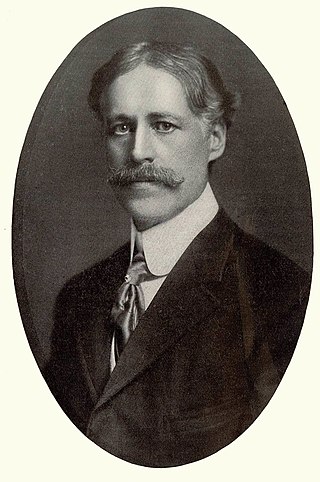
William Ordway Partridge was an American sculptor, teacher and author. Among his best-known works are the Shakespeare Monument in Chicago, the equestrian statue of General Grant in Brooklyn, the Pietà at St. Patrick's Cathedral in Manhattan, and the Pocahontas statue in Jamestown, Virginia.
George Washington (1732–1799) was the first president of the United States.

Launt Thompson was an American sculptor.
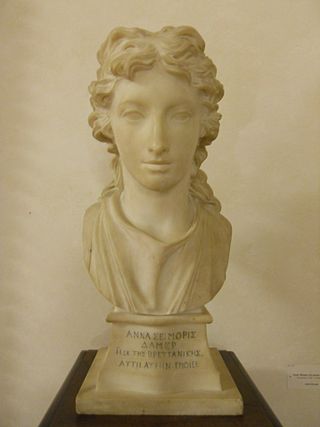
Anne Seymour Damer was an English sculptor. Described as a 'female genius' by Horace Walpole, she was trained in sculpture by Giuseppe Ceracchi and John Bacon. Influenced by the Enlightenment movement, Damer was an author, traveller, theatrical producer and actress, as well as an acclaimed sculptor.

Giuseppe Ceracchi, also known as Giuseppe Cirachi, was an Italian sculptor active in a Neoclassic style. He worked in Italy, England, and in the United States following the nation's emergence following the American Revolutionary War.
Alexander Hamilton was the first United States Secretary of the Treasury and one of the Founding Fathers of the United States of America.

William Rush and His Model is the collective name given to several paintings by the American artist Thomas Eakins, one set from 1876–77 and the other from 1908. These works depict the American wood sculptor William Rush in 1808, carving his statue Water Nymph and Bittern for a fountain at Philadelphia's first waterworks. The water nymph is an allegorical figure representing the Schuylkill River, which provided the city's drinking water, and on her shoulder is a bittern, a native waterbird related to the heron. Hence, these Eakins works are also known as William Rush Carving His Allegorical Figure of the Schuylkill River.
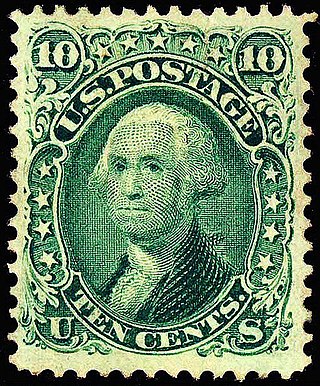
Presidents of the United States have frequently appeared on U.S. postage stamps since the mid-19th century. The United States Post Office Department released its first two postage stamps in 1847, featuring George Washington on one, and Benjamin Franklin on the other. The advent of presidents on postage stamps has been definitive to U.S. postage stamp design since the first issues were released and set the precedent that U.S. stamp designs would follow for many generations.

Edmond Thomas Quinn was an American sculptor and painter. He is best known for his bronze statue of Edwin Booth as Hamlet, which stands at the center of Gramercy Park in New York City. His larger-than-lifesize bronze bust of Victor Herbert stands near The Pond in Central Park, New York City.
George Thomas Brewster (1862–1943) was an American sculptor and architectural sculptor, known for his portraits and war memorials. Brewster taught modeling at Cooper Union, beginning in 1900; at the Art Students League of New York, beginning in 1886; and at the Rhode Island School of Design, in 1893 and 1894.

An outdoor granite sculpture of Alexander Hamilton by Carl Conrads is installed in Central Park, Manhattan, New York. Hamilton's son, John C. Hamilton, commissioned Conrads to sculpt this statue, which was dedicated on November 22, 1880, and donated to the city. Conrads used the bust of Hamilton created by the sculptor Giuseppe Ceracchi as a model for Hamilton's head.

George Washington is a marble bust portrait of George Washington, done in the style of a Roman emperor, by the Italian sculptor Giuseppe Ceracchi. It was created as part of a campaign by Ceracchi to build a larger monument to Washington. The bust was thought by many to be one of the most lifelike. It was later used as a model of Washington for works by other sculptors and engravers.
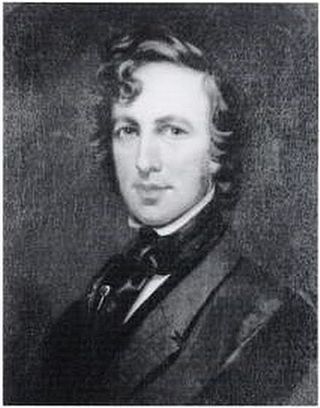
James Hamilton Shegogue was an American painter. He was described as a "man of unusual education, a proficient linguist, and a scientific explorer" by one contemporary.
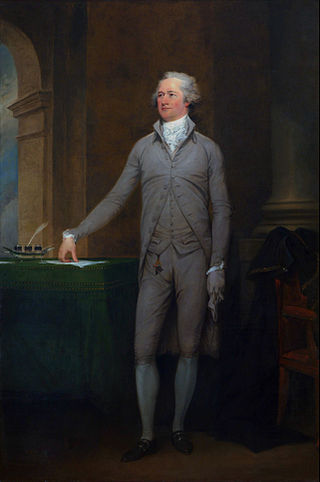
Alexander Hamilton is a 1792 full-length portrait of Alexander Hamilton by John Trumbull. It is one of multiple paintings John Trumbull made of Alexander Hamilton.
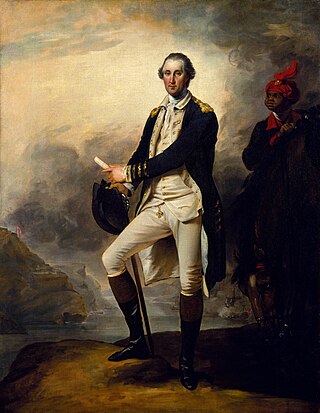
George Washington, also entitled George Washington and William Lee, is a full-length portrait in oil painted in 1780 by the American artist John Trumbull during the American Revolutionary War. General George Washington stands near his enslaved servant William Lee, overlooking the Hudson River in New York, with West Point and ships in the background. Trumbull, who once served as an aide-de-camp to Washington, painted the picture from memory while studying under Benjamin West in London. He finished it before his arrest for high treason in November. The portrait, measuring 36 in × 28 in, is on view in Gallery 753 at the Metropolitan Museum of Art in New York City. Originally in the possession of the de Neufville family of the Netherlands, it was bequeathed to the museum by Charles Allen Munn in 1924.

Maria Judson Strean was an American portraitist, recognized primarily for her artistic work as a miniaturist.

General George Washington at Trenton is a large full-length portrait in oil painted in 1792 by the American artist John Trumbull of General George Washington at Trenton, New Jersey, on the night of January 2, 1777, during the American Revolutionary War. This is the night after the Battle of the Assunpink Creek, also known as the Second Battle of Trenton, and before the decisive victory at the Battle of Princeton the next day. The artist considered this portrait "the best certainly of those which I painted." The portrait is on view at the Yale University Art Gallery in New Haven, Connecticut, an 1806 gift of the Society of the Cincinnati in Connecticut. It was commissioned by the city of Charleston, South Carolina, but was rejected by the city, resulting in Trumbull painting another version.

George Washington was a life-size marble statue of George Washington, done in the style of a Roman general, by the Venetian-Italian Neoclassical sculptor Antonio Canova. Commissioned by the State of North Carolina in 1815, it was completed in 1820 and installed in the rotunda of the North Carolina State House on December 24, 1821. The building and the statue were destroyed by fire on June 21, 1831. This work was the only one created by Canova for the United States.




















